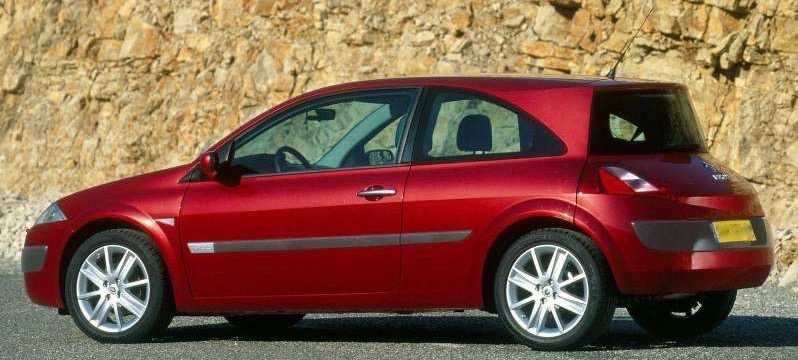What I find interesting about both the 1955 and 1958 versions is how much they were influenced by American concept cars and styling fads of the time. Not clear to me is how much Michelotti actually contributed in the way of design features. That is because the American-inspired details are largely out-of-character for him. I suspect that Nardi greatly influenced the completed designs.
Both Raggi Azzurro were on display at the Blackhawk Museum in Danville, California when I was there in March. Below are some photos I took. Their quality is hampered by the fact that the cars were jammed close to others and because the lighting in the gallery consisted of many small spotlights that are reflected by the cars' surfaces.
The 1955 Raggio Azzurro as seen in a photo found on the Internet. Conspicuously American features include the greenhouse, the two-tone paint and jet fighter inspired rear fenders.
Here is the 1955 Lincoln Futura concept car featuring the twin-bubble canopy theme that Michelotti seems to have borrowed for the greenhouse. I have no information as to when in 1955 the Raggio was first displayed, but the Futura was announced around February (the March issue of Popular Mechanics Magazine, on news stands in February, has photos of it). So there appears to have been time for the feature to be borrowed.
An interesting feature is the large headlamp mounted in the center of the grille.
The jet fighter (or space ship?) theme for the rear fender area is clearly seen here.
The bubble-type greenhouse viewed from the rear. Note the right-hand drive, a feature of European luxury cars that was rapidly falling out of fashion in the 1950s.
The 1958 Raggio Azzurro probably photographed when nearly new. No central headlight here; in its place is a Lancia shield. The two-tone paint theme is close to that of the 1955 car, as are the character line above the rear wheel and the shape of the front fender. The panoramic window is similar to those found on 1955-56 Chryslers.
Another early photo of the '58 Raggio Azzurro showing greater front end detail.
The '58 Raggio Azzurro has left-hand drive, making for easier driving in Italy and America.
The rear fenders are much more restrained than those of the 1955 car. What we see here are fin-like extensions, yet another American cliché.
The main science-fiction aspect of the design is shown here. I forgot to check if the apparent air vents at the rear of the B-pillar are functional.

































